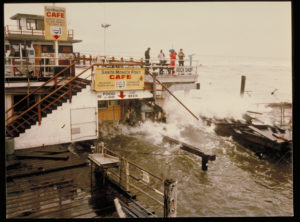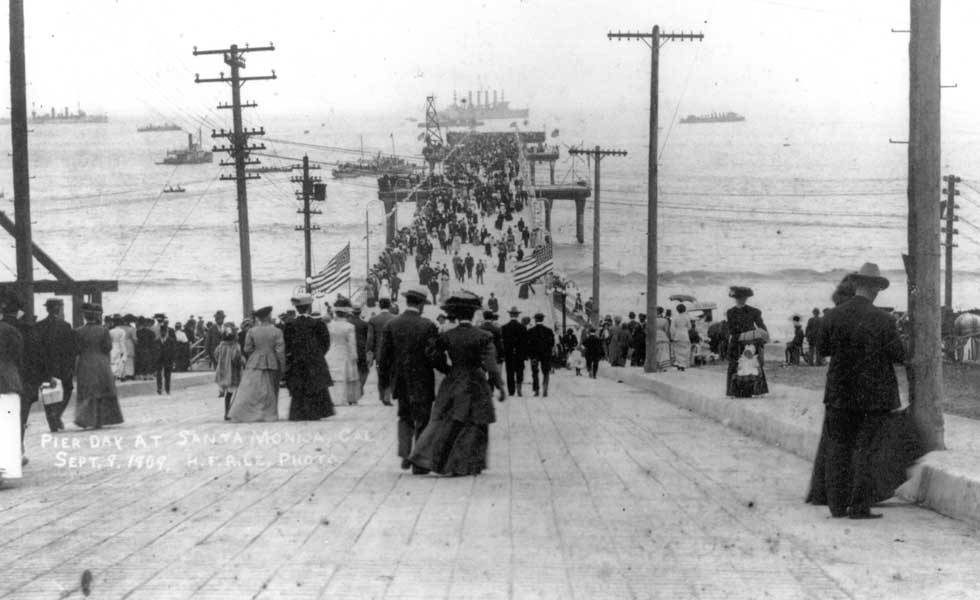The landmark Santa Monica Pier debuted on September 9, 1909, and Pacific Park opened on May 26, 1996, becoming the first amusement park on the Pier since 1930.
Together, they now welcome more than 8 million visitors each year. The world-famous Pacific Wheel Ferris wheel has been featured in more than a thousand movies, television shows and commercials, music videos, print ads and social media posts.
In May 2016, Pacific Park celebrated its 20th Birthday in a big way with a nearly $1 million new Ferris wheel lighting package featuring 174,000 LED lights that increased colors displayed on the Ferris wheel from the previous 8 to 16.7 million color value combinations, and offers higher resolution, greater color depth and faster “frames per second” display speed.
On May 2008, Pacific Park introduced an all-new Ferris wheel that also upgraded the previous lighting system from 5,392 incandescent bulbs to 160,000 energy-efficient LED lights.
Pacific Park is also known nationwide as the amusement park to unveil the world’s first solar-powered Ferris wheel in November 1998. The nine-story tall Ferris wheel lifts riders more than 130 feet above the Pacific Ocean.
Prior to Pacific Park’s opening, the Santa Monica Pier overcame a rough journey to reach its present-day landmark status.
In the Pier’s beginning, it became an instant success and attracted thousands of visitors by its unique oceanfront views. The Pier also intrigued notable entrepreneurs such as Charles Looff who built Coney Island’s first carousel in Brooklyn, New York, and saw the potential of the Santa Monica Pier as a momentous attraction. He began constructing his own pleasure pier in 1916.
Upon completion, Looff’s Pier featured the monumental Hippodrome building, which housed vintage merry-go-rounds, Wurlitzer organs, the Blue Streak Racer wooden roller coaster, the Whip and Aerospace thrill rides and a funhouse.
Looff’s Pier flourished in the 1920s and in 1924 the La Monica Ballroom opened to become the site of many first-time national radio and television broadcasts.
However, the 1930s brought change when the Santa Monica Pier was confronted with severe weather patterns and new entertainment trends. As a result, the Blue Streak Racer roller coaster was torn down in 1930, and the La Monica Ballroom eventually closed its doors.

While the Municipal Pier continued to be owned and operated by the City of Santa Monica, the Looff pleasure pier had a succession of owners. In 1953 it was taken over by the City, which leased it to a private operator.
The popularity of both Piers continued to deteriorate, and finally, in the early 1970s, the Santa Monica City Council ordered the demolition of the Piers.
In response to that decision, Santa Monica residents joined together to fight for the survival of the Piers. They developed a “Save Our Pier Forever” campaign, which resulted in the City creating the Pier Restoration Corporation to provide Pier management and oversee restoration efforts. Also, in 1975, the Hippodrome building and carousel were designated a U.S. National Historic Landmark.
Improvements continued and in 1988, the City Council adopted the Santa Monica Pier Development Program, which ordered the building of a new concrete substructure to add strength and stability to the Pier. The program also added a variety of retail, dining and entertainment attractions as well as a police substation and the world-class Pacific Park amusement park.

As the Santa Monica Pier celebrated its 100th anniversary in 2009 and Pacific Park recognized its 20-year mark in 2016, together they now welcome millions of visitors to enjoy the incredible views of the Pacific Ocean, Santa Monica coastline, Catalina Island, Malibu and Palos Verdes Peninsula.
There’s no place quite like it!
